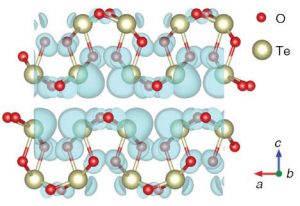
Two-dimensional beta-tellurite is the Semiconductor, deposited by rolling a bead of molten tellurium and selenium across the substrate.
“This high-mobility p-type oxide fills a crucial gap in the materials spectrum to enable fast, transparent circuits,” said team leader Torben Daeneke of the Arc Centre of Excellence in Future Low-Energy Electronics Technologies (‘Fleet’)
In 2018, a computational study revealed that the oxide beta-tellurite (β-TeO2) was a p-type oxide candidate, with tellurium’s peculiar place in the periodic table, according to RMIT University, providing its oxide with uniquely useful properties – Fleet is an umbrella organisation, to which RMIT University (Royal Melbourne Institute of technology University) is a contributor.
“This prediction encouraged our group at RMIT University to explore its properties and applications,” said Torben Daeneke, a Fleet associate investigator.
Synthesis involves rolling a molten mixture of tellurium and selenium over a surface – an oxidised silicon wafer in this case.
Ambient oxygen in the air naturally forms a thin surface oxide layer of beta-tellurite on the droplet, and this oxide layer sticks to the surface as the droplet is rolled.
“The process is similar to drawing: you use a glass rod as a pen and the liquid metal is your ink,” said RMIT researcher Patjaree Aukarasereenont.
Selenium is in the molten mix to bring its melting point down – pure tellurium is solid until >500°C, while the desirable β-phase of tellurite only grows at <300°C.
The result is a tellurite sheet 1.5nm thick – only few atoms – that is transparent across the visible spectrum as bandgap is 3.7eV.
FETs fabricated from the material showed p-type switching with hole mobility of ~140cm2/Vs “showing that beta-tellurite is ten to one hundred times faster than existing p-type oxide semiconductors,” said Aukarasereenont. “The on/off ratio of over 106 attests the material is suitable for power efficient, fast devices.”
The work is published as ‘High mobility p-type semiconducting two-dimensional β-TeO2‘ is published in Nature Electronics (abstract only available without payment).
According to the paper, field-effect hole mobility was up to 232 cm2/Vs at room temperature, hole effective mass was 0.51 and, by cooling to −50°C, carrier mobility could be boosted to 6,000cm2/Vs.
Fleet researchers from RMIT, Australian National University Canberra and University of New South Wales Kensington worked with Deakin University and the University of Melbourne.